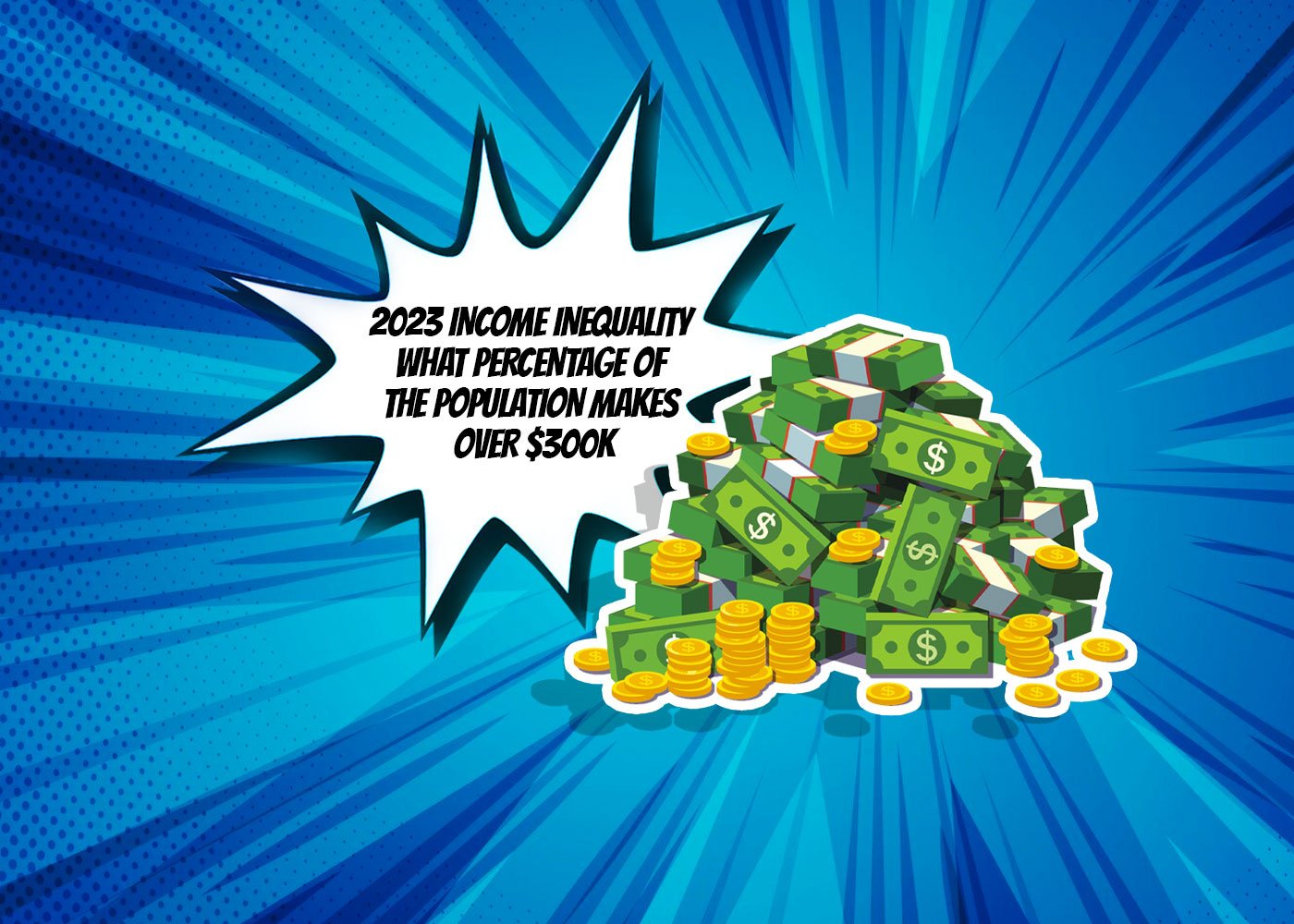Income inequality is an issue that has been steadily increasing over the last few decades, thereby becoming one of the most important challenges facing society today. As we are nearly halfway into 2023, one question looms large in this debate: what percentage of the population makes more than $300K per year? While income inequality can have varying effects on society and economies worldwide, it is essential to be able to clearly analyze hard data to understand what percentage of people are making high salaries. In this blog post, we will look at various recent studies to answer our key question: what percentage of the population takes home a salary greater than $300K in 2023?
Understanding the Income Inequality:
Income equality is the ethos that all individuals within a society should be provided with roughly equal access to income or wealth, no matter their profession, background, or other influences. With this concept in place, an immense discrepancy would rarely exist between the highest and lowest earners; most people would gravitate toward the average pay rate.
Income equality can be rather hard to achieve, and most nations have some degree of wage disparity. This could result from disparities in education or job opportunities, salaries offered for similar roles, or lack of access to resources and social assistance. Inequalities in earnings can lead to considerable social and economic repercussions like reduced chances for upward mobility among the poor class, augmented poverty rates, and decreased GDP growth/productivity.
Consequently, many nations and entities around the globe have implemented plans of action that focus on making economic access and justness more attainable for everyone to combat income inequality.
What Is the Income Distribution in the United States in 2023?
The financial disparity in the United States remains a pressing issue, as evidenced by 2021 Census Bureau data. The median household income was determined to be $80,440 at the beginning of 2023—while households within the top 20% saw earnings above $130K, and those in the bottom 20% earned less than $30K per annum. Even more sobering is that American Community Survey statistics from 2022 showed only 2.3% of U.S citizens had an annual income over three hundred thousand dollars or higher!
Moreover, a select few held most of the nation’s wealth. Forbes’ list of billionaires for 2021 disclosed that the ten wealthiest people in America had amassed over one trillion dollars collectively.
According to the data from the U.S Census Bureau’s American Community Survey conducted in 2019, here are the income percentages for households across America:
- Less than $10,000: 4.5%
- $10,000 to $14,999: 4.5%
- $15,000 to $24,999: 8.5%
- $25,000 to $34,999: 8.7%
- $35,000 to $49,999: 12.7%
- $50,000 to $74,999: 19.2%
- $75,000 to $99,999: 12.7%
- $100,000 to $149,999: 16.7%
- $150,000 to $199,999: 4.7%
- $200,000 to $299,999: 3.7%
- $300,000 and over: 2.7%
It is essential to bear in mind that these figures represent an overview of U.S. income distribution and can be affected by various elements, such as the year the data was collected or its source. Furthermore, within regions, demography groups, and other subgroups, there may exist considerable variations in terms of earnings dispersal patterns.
Conclusion:
Overall, the trend of income inequality has been shifting over the past several decades, and it is essential to consider this statistic’s gravity for our future planning. It is clear that there are still vast disparities in wealth between different segments of the population, but some strides have been made to try and close those gaps. Despite significant changes from year to year, it appears that 2023 will be no different; with just 2.3% of Americans projected to make over $300K that year. While this proposed number may seem low to some, it is important to remember that these figures constantly evolve, and change can occur quickly with decisive action. An economic climate where all members of society share equally in the fruits of production does not have to remain a distant dream — more equitable outcomes can be realized if we actively work together toward that goal.























































































![BitTorrent [New]](https://s2.coinmarketcap.com/static/img/coins/64x64/16086.png)






















